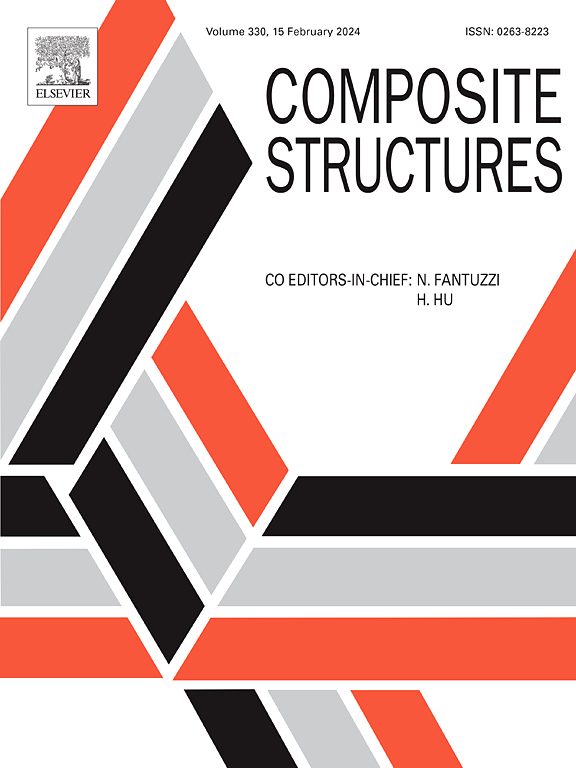Theoretical and numerical study of crashworthiness of asymmetric gradient-hierarchical bi-hexagonal tubes
IF 6.3
2区 材料科学
Q1 MATERIALS SCIENCE, COMPOSITES
引用次数: 0
Abstract
Previous studies have demonstrated that multi-cell bi-tubular tubes exhibit superior energy absorption capacity when compared to multi-cell tubes. In order to further enhance the energy absorption capacity of multi-cell bi-tubular tubes, this paper proposes an asymmetric gradient hierarchical bi-hexagonal tube (AGBT), which draws inspiration from the microstructure of the impact region of shrimp chelipeds and asymmetrical tree-like fractal structures. The results show that, under equal wall thickness conditions, the specific energy absorption and crushing force efficiency of the proposed 3rd order asymmetric gradient hierarchical bi-hexagonal tube (AGBT-3) are respectively 1.82 and 1.47 times higher than those of the conventional bi-hexagonal tube. Furthermore, under equal mass conditions, the specific energy absorption and crushing force efficiency of AGBT-3 are enhanced by up to 21% and 27%, respectively, in comparison to 0th order asymmetric gradient hierarchical bi-hexagonal tube (AGBT-0). These findings establish a clear advantage of the proposed AGBT-3 over AGBT-0 in terms of crashworthiness. Additionally, this study also conducts a theoretical prediction of the mean crushing force of the proposed AGBT, based on the simplified super folding element theory, and observes a good agreement between the theoretical prediction and numerical results. The outcomes of this study will serve as a valuable reference for the design and optimization of novel lightweight thin-walled energy-absorbing structures.
求助全文
约1分钟内获得全文
求助全文
来源期刊

Composite Structures
工程技术-材料科学:复合
CiteScore
12.00
自引率
12.70%
发文量
1246
审稿时长
78 days
期刊介绍:
The past few decades have seen outstanding advances in the use of composite materials in structural applications. There can be little doubt that, within engineering circles, composites have revolutionised traditional design concepts and made possible an unparalleled range of new and exciting possibilities as viable materials for construction. Composite Structures, an International Journal, disseminates knowledge between users, manufacturers, designers and researchers involved in structures or structural components manufactured using composite materials.
The journal publishes papers which contribute to knowledge in the use of composite materials in engineering structures. Papers deal with design, research and development studies, experimental investigations, theoretical analysis and fabrication techniques relevant to the application of composites in load-bearing components for assemblies, ranging from individual components such as plates and shells to complete composite structures.
 求助内容:
求助内容: 应助结果提醒方式:
应助结果提醒方式:


